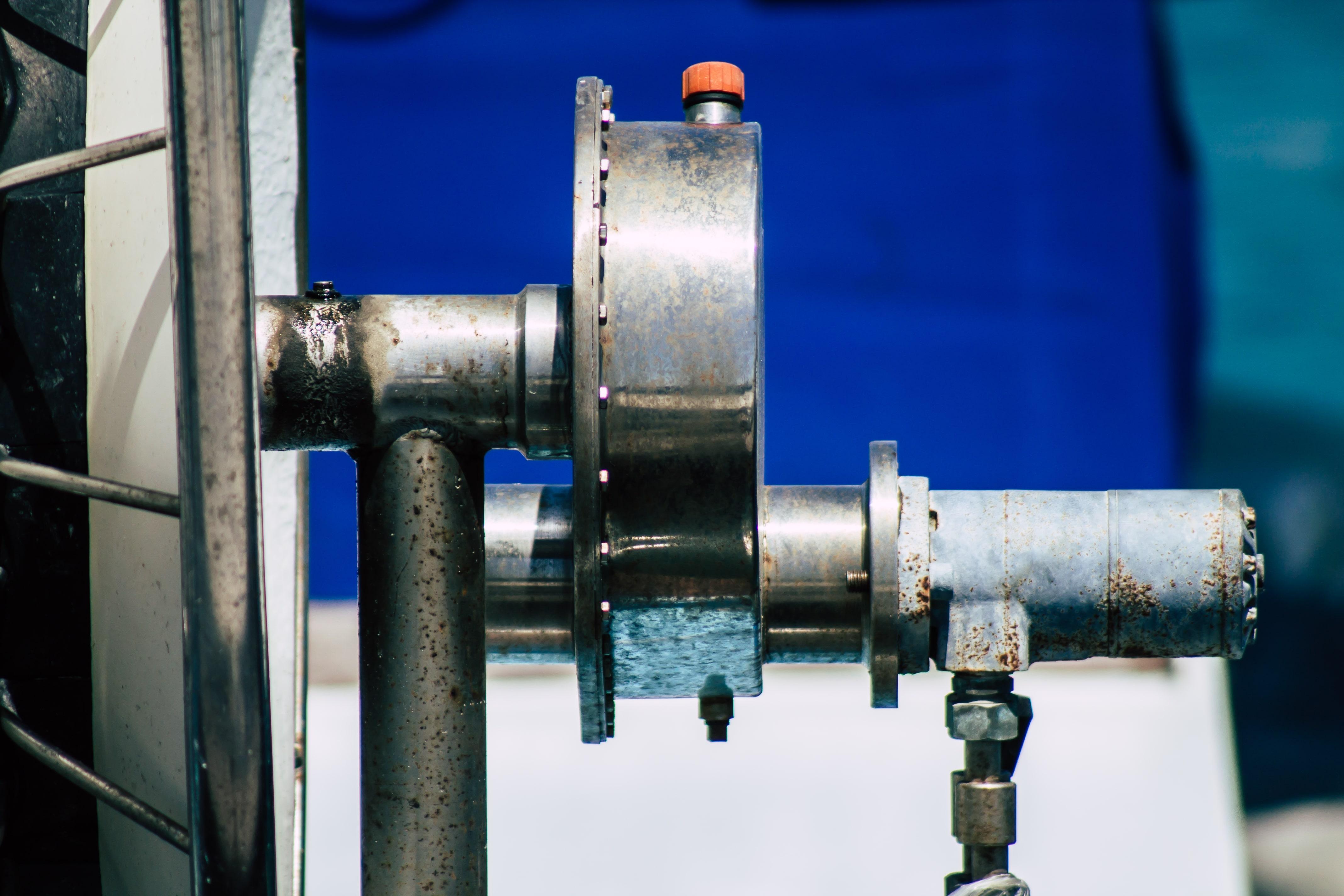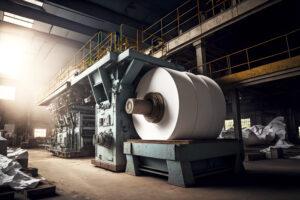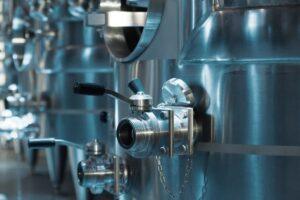
Also known as tube pumps, peristaltic pumps apply deceptively simple yet very effective peristaltic action to have their operation well mimicked by natural biological systems’ rhythmic contraction and relaxation in all mammals. Fluids pass through flexible tubes compressed at intervals with revolving rollers or shoes, creating a smooth, continuous, and pulseless flow. While the pump allows for the perfect moving of internal elements through a flexible tube, peristaltic tights can offer an environment-contaminated media transfer through direct contact.
A stalwart of peristaltic pumps for many industries, their versatility to prevent a streamlined and completely enclosed, leak-proof system makes such an arrangement effective. So adept are these pumps valveless, seal-less, and glandless that they offer no hiccups to flow operations of all types of abrasive, viscous, or shear-sensitive fluids while remaining easily maintainable. This makes them ideal for any process requiring chemical dosing, such as chemical treatment plants or associated wastewater treatment installations.

Peristaltic Pumps in Industrial Applications
In industrial operations, pumps are essential machinery in the safe and efficient transfer of fluids, whether it is transferring chemicals, dosing additives, or disposing of wastewater. Not all traditional pumps — be they centrifugal, diaphragm, or gear — are made for abrasive, corrosive, or sensitive liquids. As industries become tighter and more specific about demand for pump technology, the choice of pump type can be all the more strategic.
With their unique design and reliable performance, peristaltic pumps have been widely accepted in the industrial arena. Unlike traditional systems in which liquids are pumped into directly contacting parts of the pump, fluids move through a flexible tube, which eliminates direct contact with pump components. This results in less wear and tear, contamination risk, and less maintenance downtime, which is heavily advantageous for chemical processing, mining, and water treatment sectors.
We can bear witness to a growing industrial peristaltic pumps market. Companies invest in such pumps not just because of their efficiency but also because of the efforts they make towards the environmental and regulatory standards they serve. As industries offer more steps to modernization in their fluid-handling systems, peristaltic pumps are increasingly perceived as a wise investment and future-ready solution.
How Peristaltic Pumps Work
An excellent mechanism characterizes the operation of Peristaltic pumps: At the system’s heart is a flexible tube, which lies inside a typically circular pump casing. Using rotor-based motion, rollers or shoes apply compression in a wave-like manner to the tube, propelling the fluid forward. Afterward, when the roller passes, the return to its original shape of the tubing creates a vacuum that draws in more fluid. The capability of the tube to move through this continuous cycle allows for smooth, controlled flow without needing any valves or seals.
One of the prominent advantages of these peristaltic pumps is that the lifted liquid never contacts anything except the inside of the tubing. This non-contact handling leaves the flowing stream to maintain a contamination-free environment, a characteristic that is vital in industries that rely on a high degree of hygiene or chemical resistance. This also makes the pump easier to maintain and less subject to wear under aggressive or abrasive media.
Such features make peristaltic pumps exceptionally adaptable; therefore, they are used in many industries. Chemical processing, water and wastewater treatment, food and beverage-making, pharmaceuticals, and mining are some of their applications. Whether for dosing, transferring, or metering, their clean and reliable operation profile favors their inclusion in systems where accuracy, safety, and long life are fundamental.
Key Benefits of Industrial Peristaltic Pumps
Industrial peristaltic pumps provide various beneficial factors favorable in meeting many challenging applications. The design and operation endow the pumps with the ability to enhance productivity, reduce downtime, and give guaranteed reliability over the long haul. Some salient advantages of industrial peristaltic pumps are as follows:
- Durability and low maintenance: The absence of seals, valves, or moving parts in contact with the fluid reduces wear and tear, leading to lower maintenance needs and longer pump life. This results in less downtime and reduced maintenance costs.
- Chemical resistance and ability to handle viscous, abrasive fluids: Peristaltic pumps are built to withstand harsh chemicals and fluids that other pumps might struggle with. The flexibility in tubing materials allows them to handle a wide range of media, including viscous, abrasive, and shear-sensitive liquids, without compromising performance.
- Energy efficiency and accuracy: Peristaltic pumps operate efficiently with minimal energy consumption. They also provide precise, consistent flow control, making them particularly suitable for applications requiring accurate fluid dosing. This ability seamlessly transitions into the need for peristaltic dosing pumps, which offer further enhancements in precision for tasks like chemical injection and fluid measurement.

Peristaltic Pumps in Wastewater Applications
And this is what you would call the best, most new age, all-purpose technology for industrial wastewater treatment: a peristaltic pump-its ability to handle an innumerably complex sum of abrasive and hazardous fluids with precision and reliability makes it fit as a top-of-the-line technology for almost every application, be it in the office or factory, especially in a harrowing world called wastewater management-in where even a tiny failure in a pump could mean ruin. The uniqueness of peristaltic pumps applications in various functions is enough to make them popular solutions in the art of moving fluids.
Trustworthy Substance in the Feed of Sludge and Chemicals
One of the most powerful roles that can be played by peristaltic pumps for wastewater treatment is the constant exchange and transfer of sludge and chemicals. Aggressive sludge is thick, viscous, and harshly chemical, which one typically has to deal with in waste processes; these pumps can easily transfer all of that. Peristaltic pumps tend to deliver reliable flow rates while dealing with abrasive or viscous fluids, ensuring operation and lessening the chances of blockage or system failure.
Case Uses in Wastewater Applications
- Chemical dosing for flocculation: In wastewater application, peristaltic pumps are often used to dose flocculants or coagulants. These chemicals help to aggregate and remove suspended solids from the water. The pump’s precision ensures that the right amount of chemical is injected into the process, optimizing treatment efficiency.
Sludge transfer: Peristaltic pumps efficiently transport sludge from one treatment stage to another. Their robust construction allows them to withstand the abrasiveness of sludge, while their non-contact fluid handling prevents contamination, ensuring the system remains hygienic and effective. - Water treatment additives: Peristaltic pumps are also widely used in delivering water treatment additives, such as pH adjusters and disinfectants, in municipal or industrial water treatment facilities. The precise and controlled dosing capabilities are critical in ensuring that treatment processes meet regulatory standards.
Peristaltic Pump Applications Across Industries
Such incredible versatility characterizes peristaltic pumps, which are utilized extensively in many industries, apart from wastewater treatment and chemical processes. Peristaltic pumps are found useful for their handling of difficult fluids, as well as ensuring precise dosages and running with little maintenance. The following expository sections lay out the broader uses of peristaltic pumps across various sectors:
Broader Uses Across Industries
- Mining: In the mining industry, peristaltic pumps are used to handle slurry, abrasive materials, and high-density fluids. Their ability to pump thick slurries with a consistent flow is invaluable in processes like ore extraction and tailings management.
- Food and beverage: Peristaltic pumps are used to transport viscous liquids like syrups, sauces, and pastes. Their sanitary design ensures food safety by preventing contamination, and their precise flow control is ideal for applications like dosing ingredients and adding preservatives or flavors.
- Pharmaceuticals: In pharmaceutical manufacturing, peristaltic pumps are used for precise dosing and the handling of sensitive compounds. The non-contact fluid handling ensures that there is no cross-contamination between fluids, which is crucial in drug production.
- Cosmetics: Peristaltic pumps are also found in the cosmetic industry, handling a variety of viscous, sticky fluids such as creams, lotions, and gels. Their precise flow capabilities allow for consistent ingredient mixing and packaging.
Applications in Challenging Environments
Peristaltic pumps are especially valuable in environments where other pumps might struggle due to the nature of the fluids involved. For example:
- Handling abrasive fluids: In industries like mining or chemical processing, peristaltic pumps are ideal for moving abrasive or corrosive fluids, as the tubing is the only part that comes into contact with the media, reducing wear on pump components.
- Viscous and shear-sensitive fluids: In the food, beverage, and pharmaceutical industries, peristaltic pumps provide a gentle pumping action that is critical for shear-sensitive fluids that must not be broken down or altered during transfer.
- Hygienic and sterile conditions: Industries that require sterile conditions, such as pharmaceuticals or food processing, benefit from the hygienic design of peristaltic pumps, which minimize the risk of contamination and ensure fluid purity.
Choosing the Right Peristaltic Pump
Selecting a peristaltic pump that excels in performance and efficiency for your application is important. Various factors must be decided upon when selecting a peristaltic pump, e.g., the type of fluid it handles, the required pressure conditions, and the tubing material chosen. These factors can affect the life, maintenance, and effectiveness of the pump in your system.
Factors to Consider
- Fluid type: The nature of the fluid being pumped is one of the most important factors to consider. For example, if the fluid is abrasive, viscous, or contains solids, you will need a peristaltic pump designed to handle these specific characteristics. Certain pumps are optimized for more aggressive media, while others are better suited for delicate or shear-sensitive liquids.
- Pressure requirements: The pressure at which the fluid needs to be pumped plays a critical role in pump selection. Higher pressures typically require pumps with more robust construction and advanced components to maintain consistent flow without risk of failure. Consider whether your system requires a low-pressure or high-pressure solution based on the application’s demands.
- Tubing material: The material of the tubing used in peristaltic pumps is essential, as it must be compatible with the fluid being pumped. Materials like silicone, PVC, and fluoropolymer are common, each offering different levels of chemical resistance, durability, and flexibility. The correct tubing material ensures a longer pump life and prevents contamination of sensitive fluids.
Choosing the right peristaltic pump requires a thorough understanding of your system’s needs and fluid characteristics. By considering these factors carefully, you can ensure reliable, efficient, and long-lasting pump performance.
For more information on peristaltic pumps and to explore different models, check out our Pumps and Peristaltic Pumps product categories. These options provide a range of solutions tailored to meet diverse industrial needs.
Final Thoughts
A peristaltic pump is an essential tool for industries like chemical processing and water treatment. It can handle solids, viscous liquids, and chemicals perfectly. That is why they are so important in these industries. Whether it is to measure chemicals accurately or transfer effluent efficiently, they do it contamination-free with very low maintenance, increasing the work efficiency and reducing downtime.
Long-term durability, low maintenance, and versatility make peristaltic pumps a profitable business proposition for industries that want to increase productivity and comply with the best standards of maintenance. They make an important contribution not only towards ensuring reliability in processes but also in avoiding costly system failures in businesses, thus reducing overall operational expenditure.
AMED is a full pump solution for complete pump offerings for your needs. We can help you find that pump to enhance your operations in the long term with our complete range of offerings.










